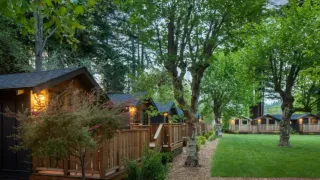August 26, 2015
Sean Hayes to be Divine in 'An Act of God' in Los Angeles
Jason St. Amand READ TIME: 1 MIN.
Sean Hayes will play God Almighty in the City of Angels next year.
Producers of the "An Act of God" said Wednesday that the Emmy Award-winning former "Will and Grace" star will step into the big role starting Jan. 30 at the Ahmanson Theatre in Los Angeles. The divine part was filled this summer by Jim Parsons on Broadway.
The 90-minute play is a chance for the Almighty to set the record straight - like that he doesn't hate gays and he can't help anyone sing better - and update his 10 Commandments.
It was written by David Javerbaum, former head writer and executive producer of "The Daily Show" and a producer of "The Late Late Show with James Corden." He's also the power behind the Twitter handle @TheTweetofGod.






